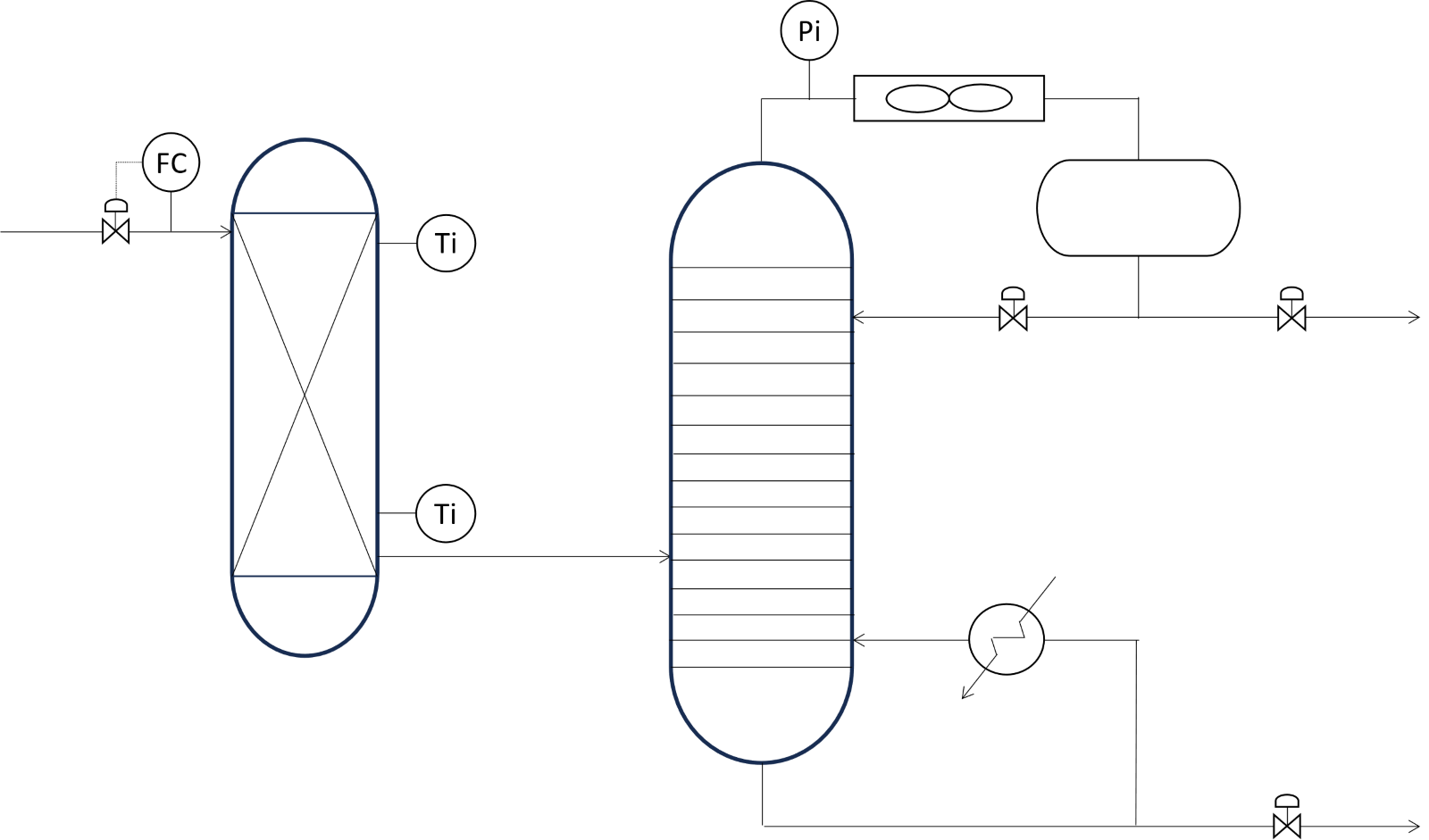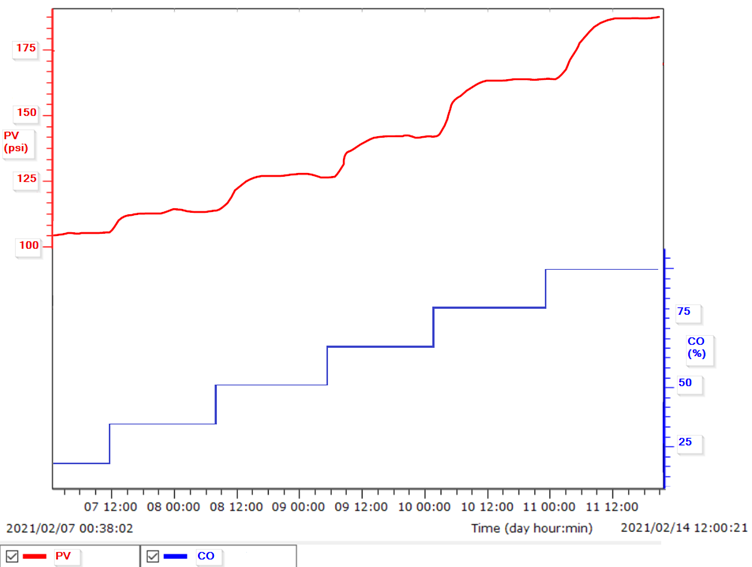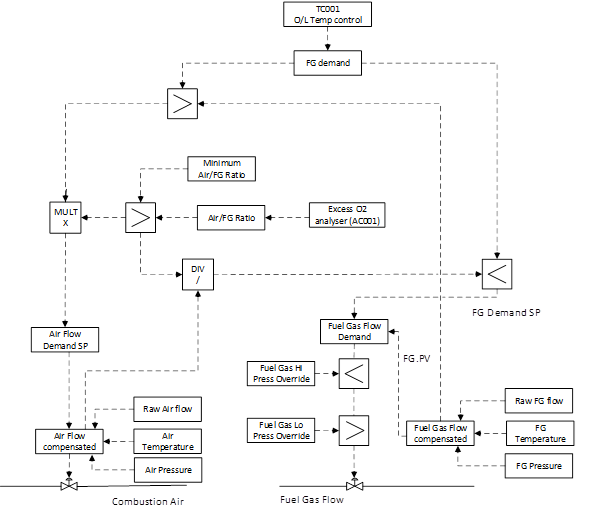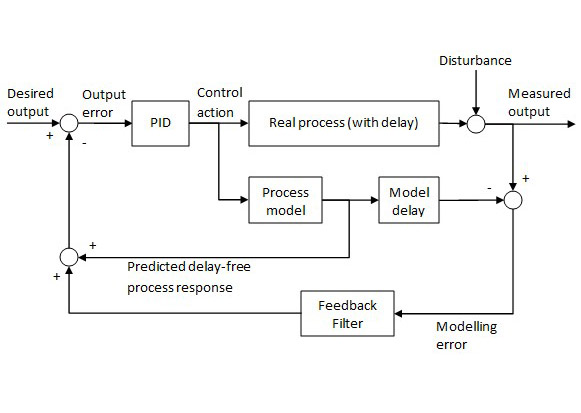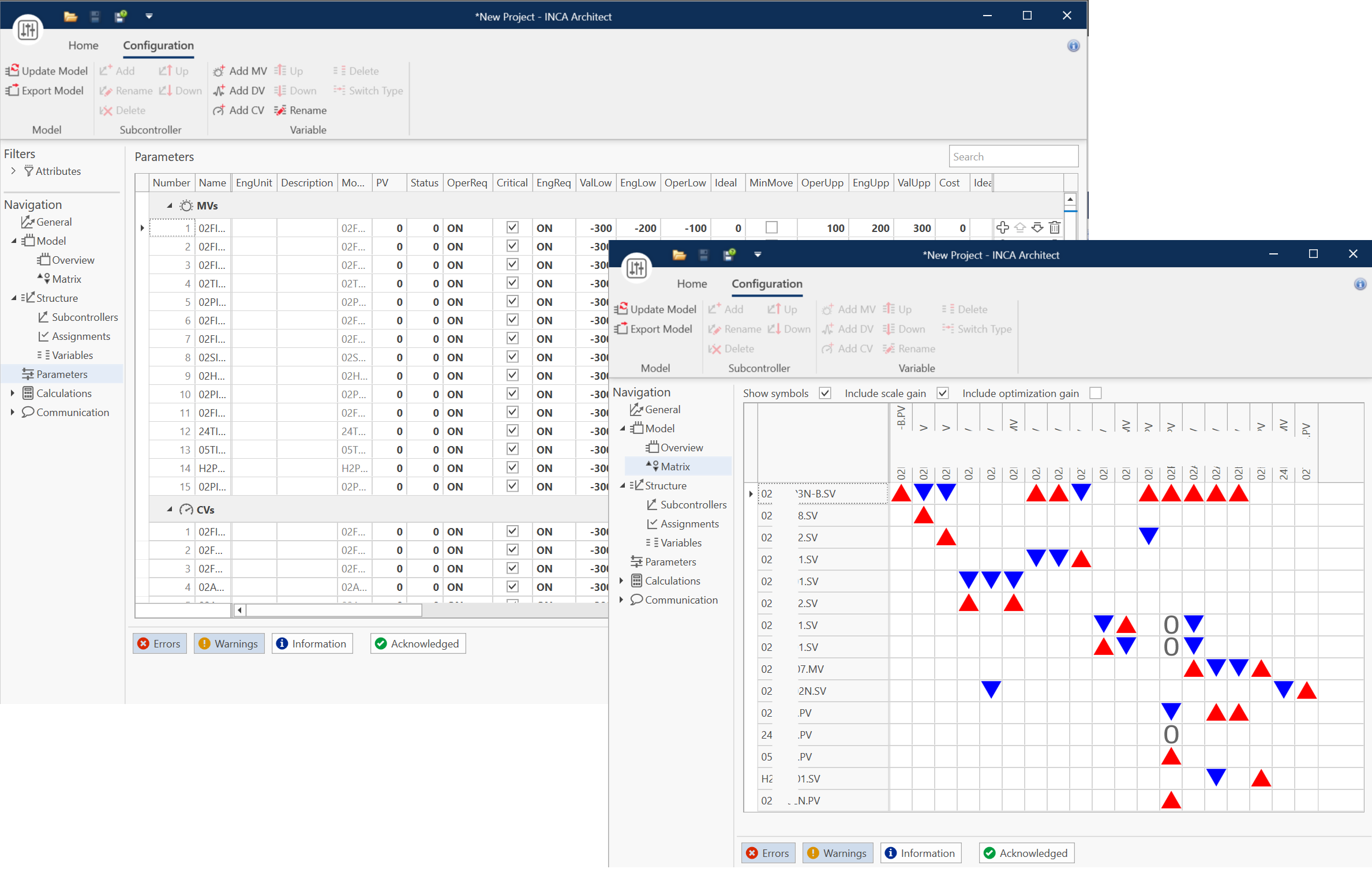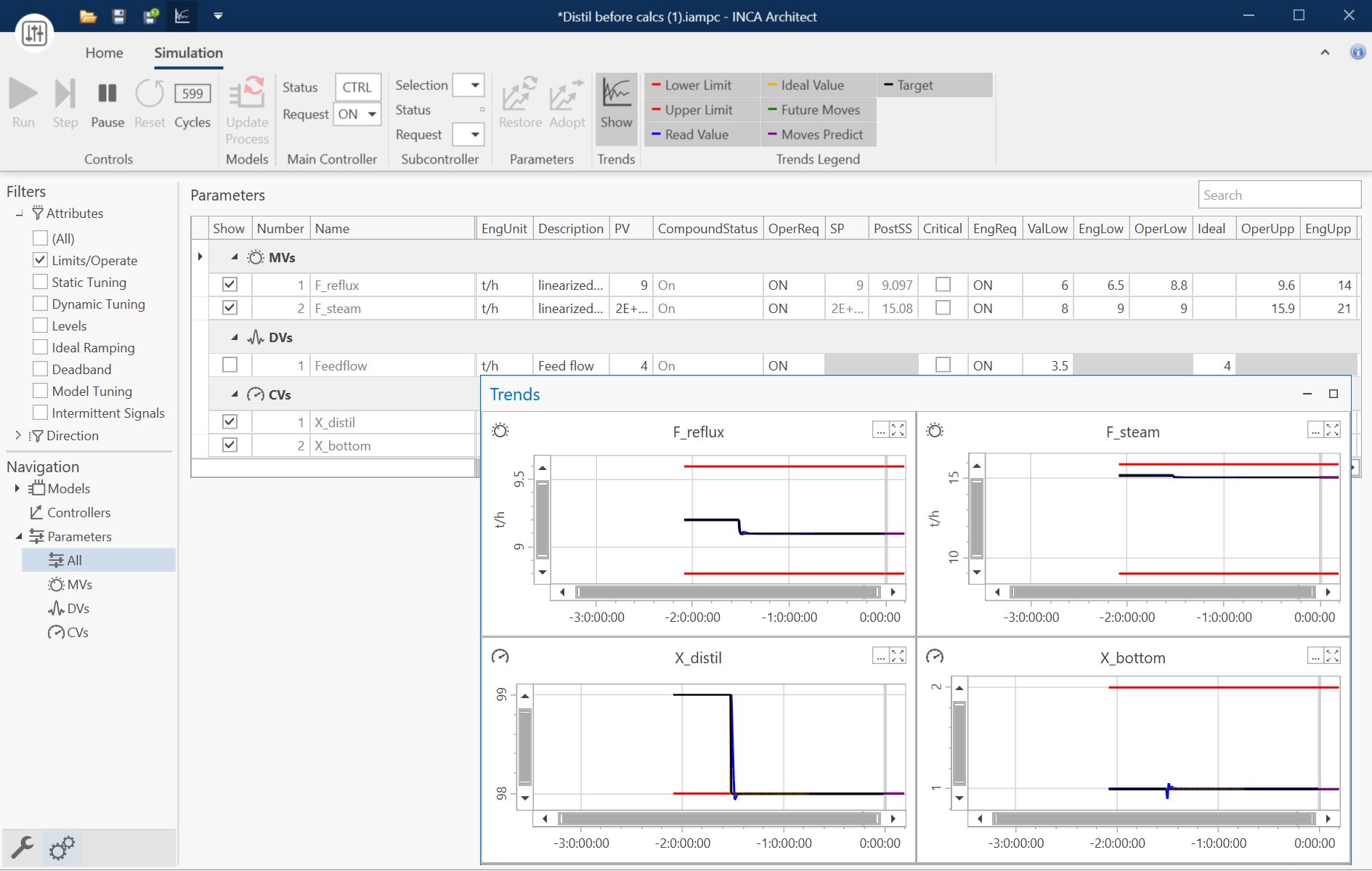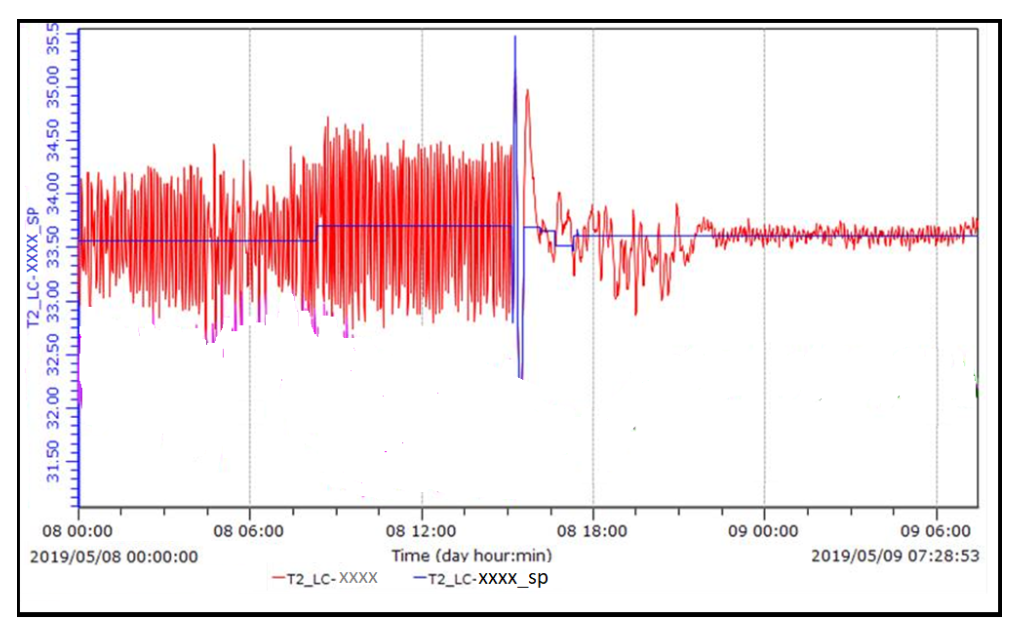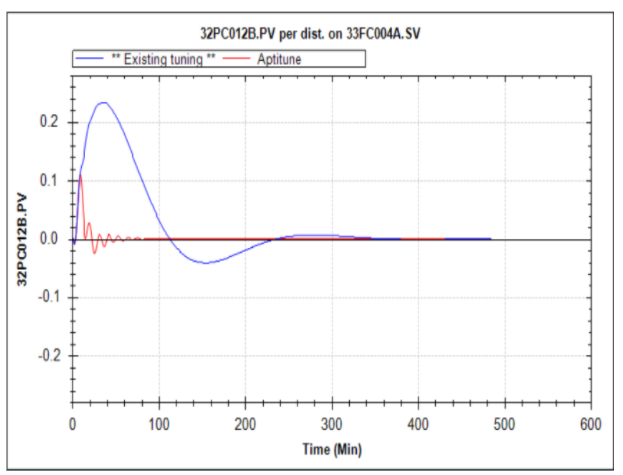In the blog post “Intermediate Variables in APC”, it was explained how Advanced Process Control (APC) applications can benefit from the use of intermediate variables. In this second blog, further potential for improvement is presented. If the concept of intermediate variables is new to you, check the previous blog first.
Advanced Process Control (APC) applications rely on models that accurately describe the process behaviour. The modelled response of one or more controlled variables (CVs) to a setpoint change in a manipulated variable (MV) is used to predict these CVs over the prediction horizon. The prediction horizon is usually several hours. Next, optimal setpoint moves are calculated for manipulated variables and a feedback mechanism ensures that the predictions stay in tune with reality.
Non-linearities – an invisible enemy of your PID control loops
PID control is widely used for process control across various industries. However, PID control performs well if the process behaviour is almost linear, which is not the case most of the time. Non-linearities are quite common in practice, although they are often not properly identified or considered for the design of the control system.
Topics: PID tuning, PID tuning software, Advanced Process Control
Cross-limiting Control is implemented, what’s next?
The cross-limiting control schemes are utilized in furnaces to ensure the airflow never goes below the safe limit. These control schemes are designed so that whenever there is an increase in demand for fuel gas, the airflow will lead fuel gas flow, and in the case of a decrease in fuel gas demand, the airflow will lag the fuel gas flow.
Topics: PID tuning, Plant performance, Advanced Process Control
Smith Predictor: when to use it and how to tune it
From refineries to petrochemical and chemical industries, the Smith predictor is used to improve the control of processes with a long dead time. The delayed behavior of the process is compensated by using an approximated model in the control structure. It is common for process control engineers to evaluate the need for such control structures and keep them performant. This blog explains the consequences of a long process dead time and what tools to use when tuning your Smith Predictor.
Topics: PID tuning, PID tuning methods, PID control equations
How to configure an MPC controller with INCA Architect
Once installed, INCA MPC has proven to generate sustained benefits for operating companies. To configure INCA MPC, you need to take several steps: choose the targets and constraints, determine the controller structure, set up the communication between the controller and the process, and tune the controller… After the first version of the controller, updates will be needed later. These updates range from tweaking a tuning parameter to adding extra variables to the controller and updating the targets. All these steps must be executed carefully. The iterations involved in finding mistakes slow down the project’s progress.
Topics: Advanced Process Control
An earlier blog described how INCA Architect makes configuring an INCA MPC application easy by automating tasks, grouping related information and continuously monitoring the consistency and validity of the configuration.
But what if your situation is non-standard? Can you also use the INCA tools in that case? Can you verify the correct behavior of your configuration before going online? This blog discusses how the combination of INCA MPC and INCA Architect gives you all the tools to tackle these cases too!
Topics: Advanced Process Control
Non-minimum phase systems are difficult to understand and even difficult to tune manually. The understanding of non-minimum phase system and control strategies explain in this blog.
The response of a non-minimum phase system to a step input has an "undershoot". This means, if the output was initially zero and the steady-state output is positive, the output becomes negative before changing direction and converging to its positive steady-state value.These systemsare difficult to control due towaiting time until the initial undershoot for a positive gain system or overshoot for a negative gain system.
Topics: PID tuning
Hydrogen: Do you want to reduce the venting inside your refinery?
Hydrogen is one of the key raw materials used in the refinery. It is used in various process units: Hydrocracker, Aromatic plants, to name a few. Since the process is dynamic, the demand for H2 keeps on varying, and excess is vented out either to fuel gas or to flare to control the Header pressure. The good news is that the venting of the H2 can be reduced. In some cases, it can be reduced to close to zero.
Topics: PID tuning
How to approach a PID tuning project in a phased way
Many operations managers face a challenge to maintain all PID loops on their plant in good working order. Plant safety may be at stake in some cases if some of these PID loops are kept in manual mode. Poor PID tuning may also contribute towards degradation in plant performance, leading to unstable operation and, eventually, reduced profitability. Operations managers need to create a culture of continuous PID performance monitoring and improvement, ensuring safe and optimal plant performance. How do you embark on this journey, and what are the best practices?
Topics: PID tuning


